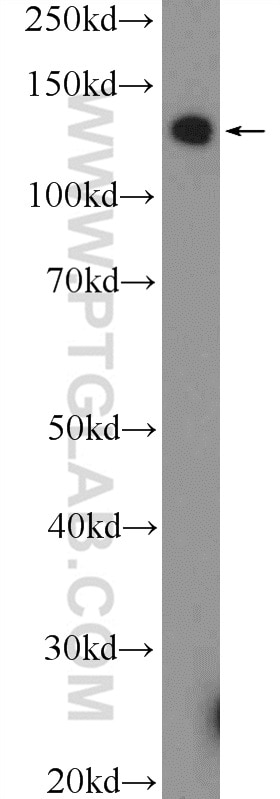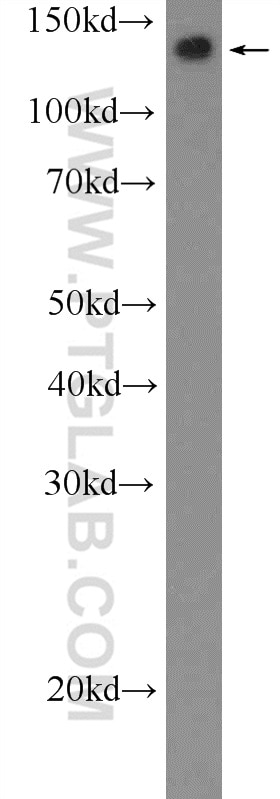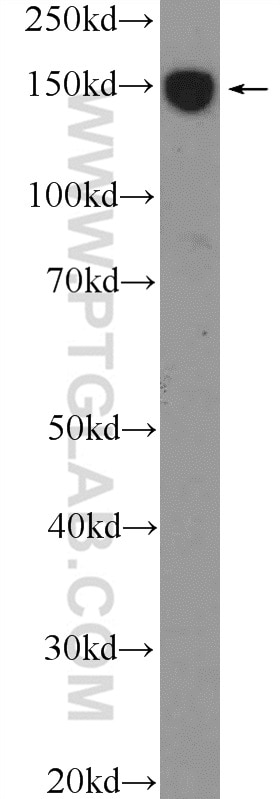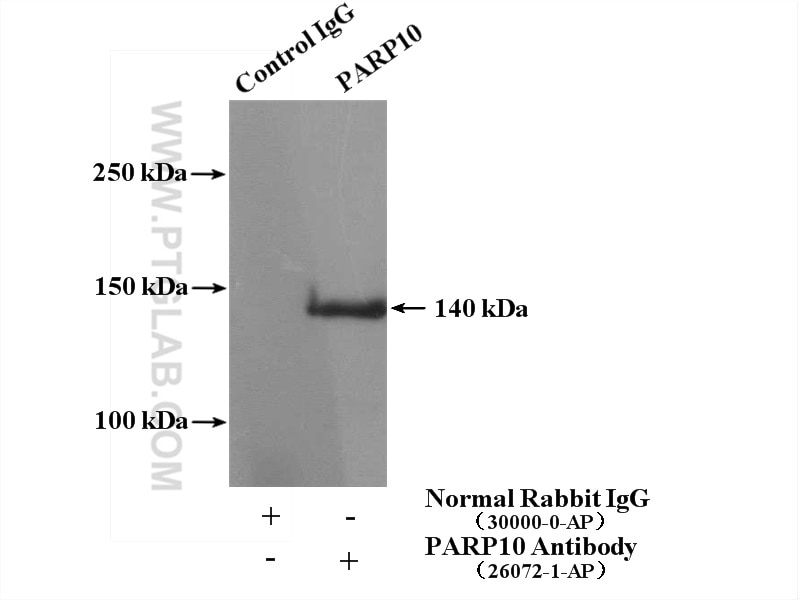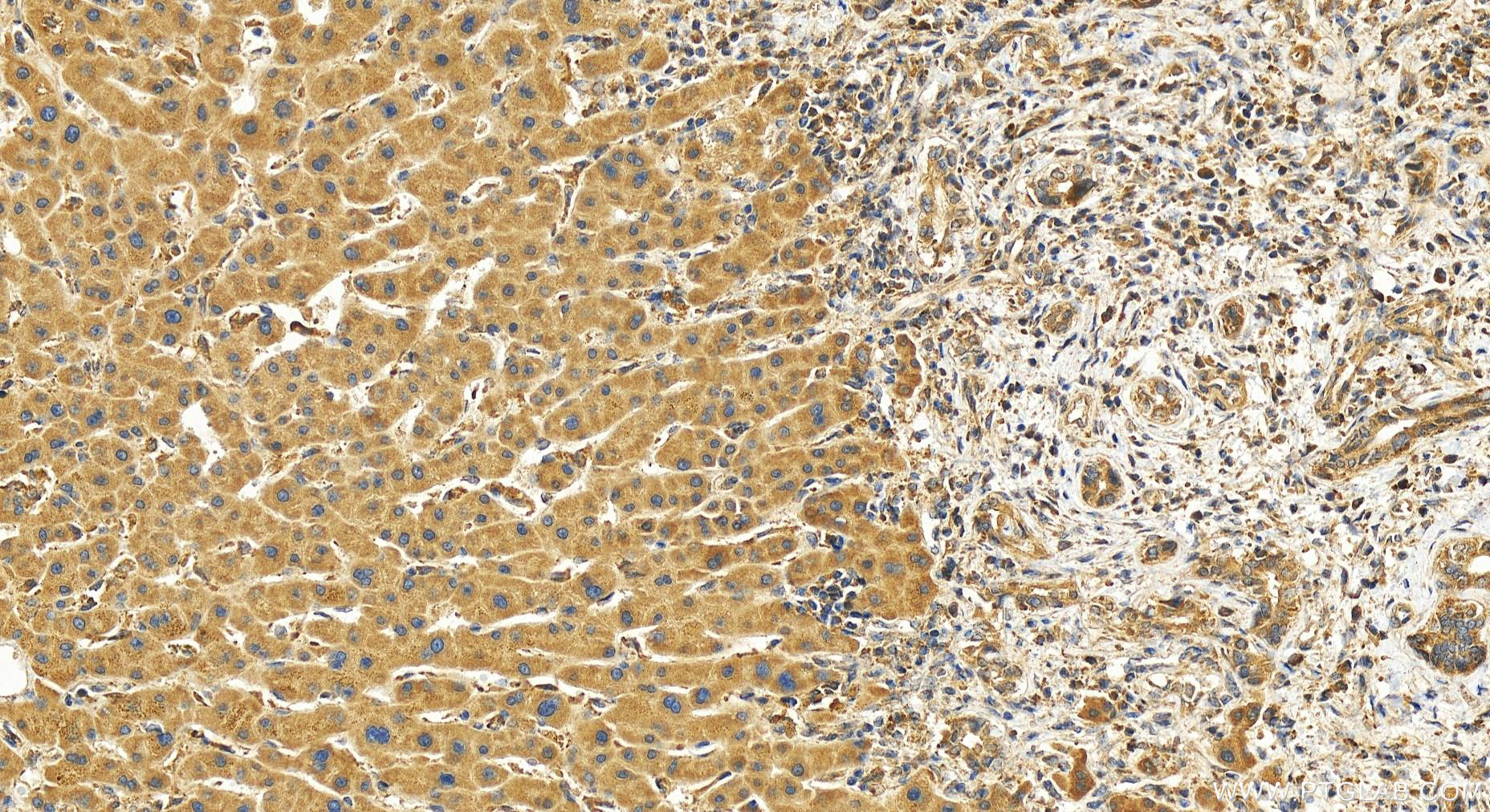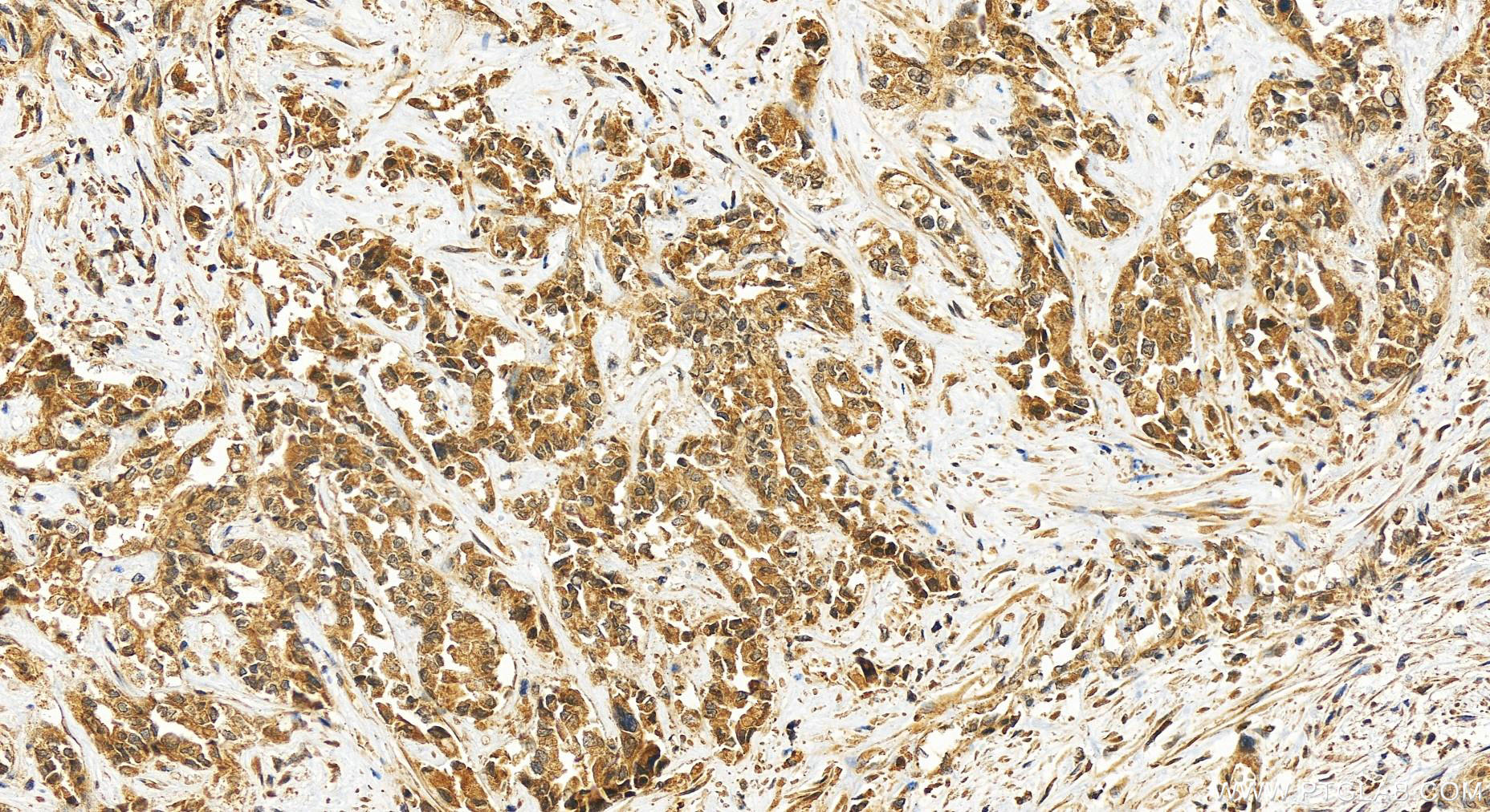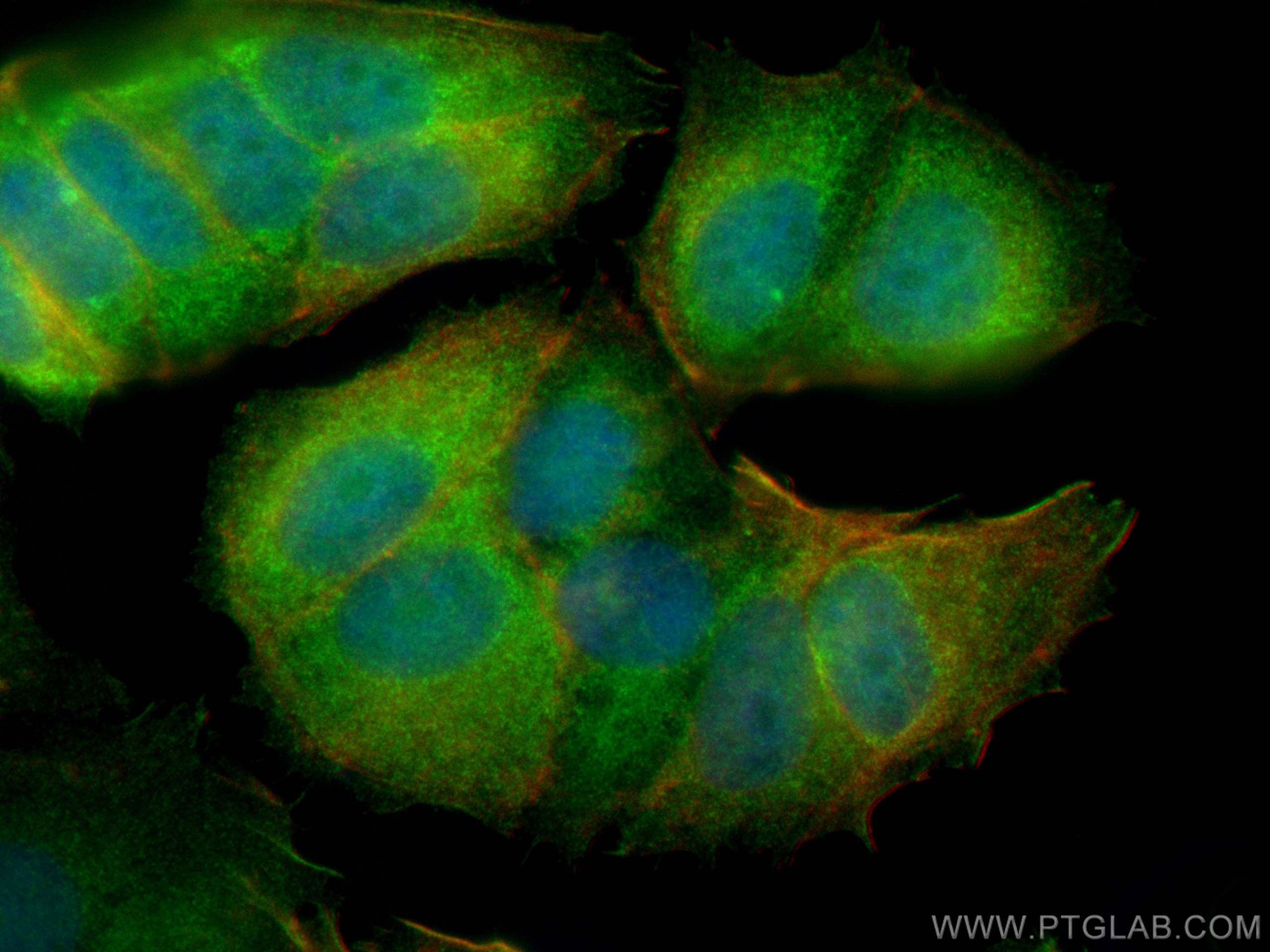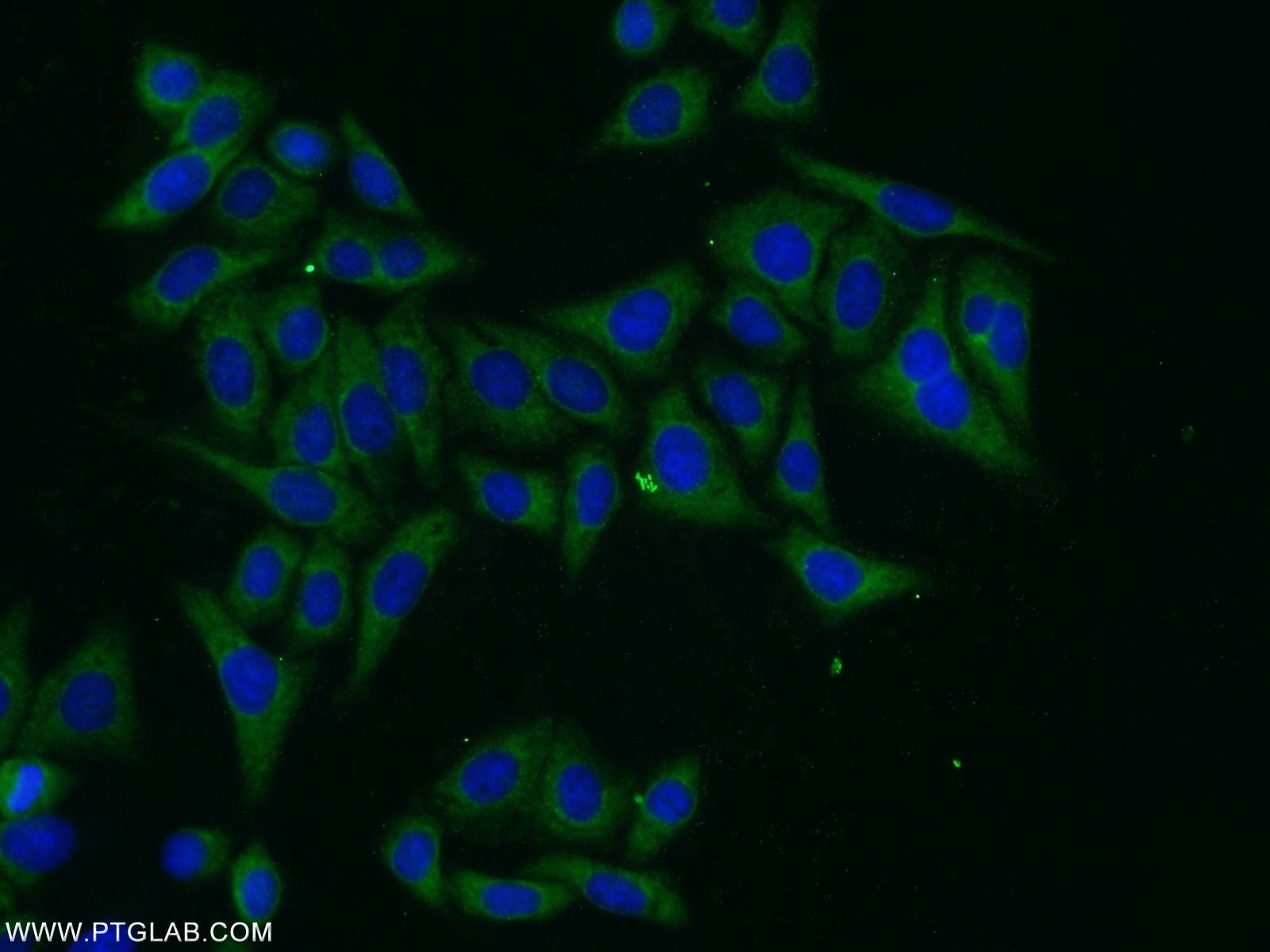Validation Data Gallery
Tested Applications
| Positive WB detected in | Jurkat cells, HL-60 cells, MCF-7 cells |
| Positive IP detected in | Jurkat cells |
| Positive IHC detected in | human intrahepatic cholangiocarcinoma tissue Note: suggested antigen retrieval with TE buffer pH 9.0; (*) Alternatively, antigen retrieval may be performed with citrate buffer pH 6.0 |
| Positive IF/ICC detected in | MCF-7 cells |
Recommended dilution
| Application | Dilution |
|---|---|
| Western Blot (WB) | WB : 1:500-1:1000 |
| Immunoprecipitation (IP) | IP : 0.5-4.0 ug for 1.0-3.0 mg of total protein lysate |
| Immunohistochemistry (IHC) | IHC : 1:250-1:1000 |
| Immunofluorescence (IF)/ICC | IF/ICC : 1:50-1:500 |
| It is recommended that this reagent should be titrated in each testing system to obtain optimal results. | |
| Sample-dependent, Check data in validation data gallery. | |
Product Information
26072-1-AP targets PARP10 in WB, IHC, IF/ICC, IP, ELISA applications and shows reactivity with human samples.
| Tested Reactivity | human |
| Host / Isotype | Rabbit / IgG |
| Class | Polyclonal |
| Type | Antibody |
| Immunogen |
CatNo: Ag23457 Product name: Recombinant human PARP10 protein Source: e coli.-derived, PET30a Tag: 6*His Domain: 673-1025 aa of BC136542 Sequence: QEEAAALRQALTLSLLEQPPLEAEEPPDGGTDGKAQLVVHSAFEQDVEELDRALRAALEVHVQEETVGPWRRTLPAELRARLERCHGVSVALRGDCTILRGFGAHPARAARHLVALLAGPWDQSLAFPLAASGPTLAGQTLKGPWNNLERLAENTGEFQEVVRAFYDTLDAARSSIRVVRVERVSHPLLQQQYELYRERLLQRCERRPVEQVLYHGTTAPAVPDICAHGFNRSFCGRNATVYGKGVYFARRASLSVQDRYSPPNADGHKAVFVARVLTGDYGQGRRGLRAPPLRGPGHVLLRYDSAVDCICQPSIFVIFHDTQALPTHLITCEHVPRASPDDPSGLPGRSPDT 相同性解析による交差性が予測される生物種 |
| Full Name | poly (ADP-ribose) polymerase family, member 10 |
| Observed molecular weight | 130-140 kDa |
| GenBank accession number | BC136542 |
| Gene Symbol | PARP10 |
| Gene ID (NCBI) | 84875 |
| RRID | AB_2880362 |
| Conjugate | Unconjugated |
| Form | |
| Form | Liquid |
| Purification Method | Antigen affinity purification |
| UNIPROT ID | Q53GL7 |
| Storage Buffer | PBS with 0.02% sodium azide and 50% glycerol{{ptg:BufferTemp}}7.3 |
| Storage Conditions | Store at -20°C. Stable for one year after shipment. Aliquoting is unnecessary for -20oC storage. |
Background Information
PARP10 (Poly(ADP-ribose) polymerase family member 10) is a mono-ADP-ribosyltransferase that belongs to the PARP family. It regulates a variety of cellular functions, including gene transcription, DNA repair, and cell cycle control, by catalyzing ADP-ribosylation reactions. PARP10 is distributed in both the nucleus and cytoplasm, participating in the cellular response to DNA damage. In particular, its expression level significantly increases in response to UV-induced DNA damage. Additionally, PARP10 plays a crucial role in the antiviral response, being highly upregulated by interferon (IFN) to inhibit the replication of certain viruses and block protein translation during viral replication. PARP10 is also involved in immune regulation, interacting with NEMO to block the NF-κB signaling pathway and the production of pro-inflammatory cytokines.
Protocols
| Product Specific Protocols | |
|---|---|
| IF protocol for PARP10 antibody 26072-1-AP | Download protocol |
| IHC protocol for PARP10 antibody 26072-1-AP | Download protocol |
| IP protocol for PARP10 antibody 26072-1-AP | Download protocol |
| WB protocol for PARP10 antibody 26072-1-AP | Download protocol |
| Standard Protocols | |
|---|---|
| Click here to view our Standard Protocols |

